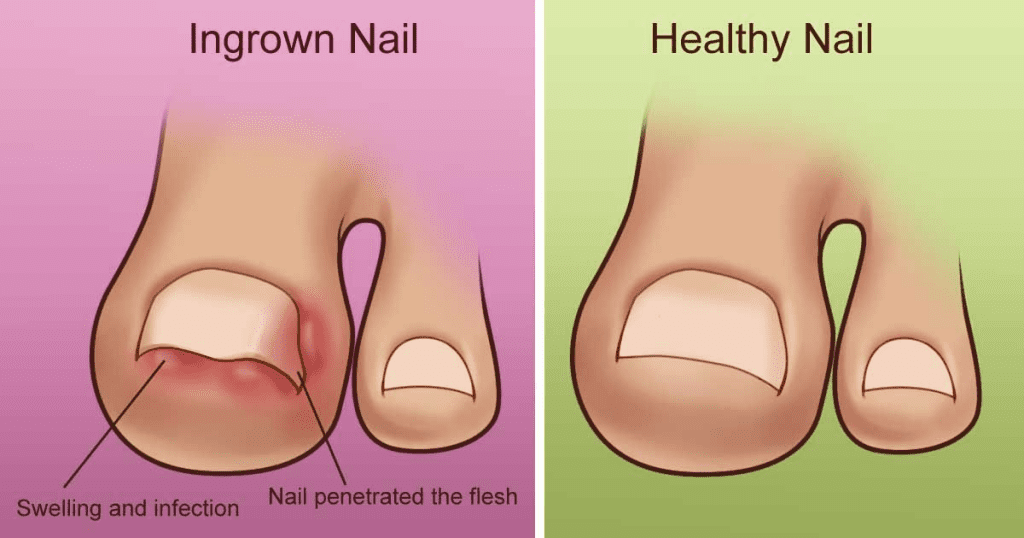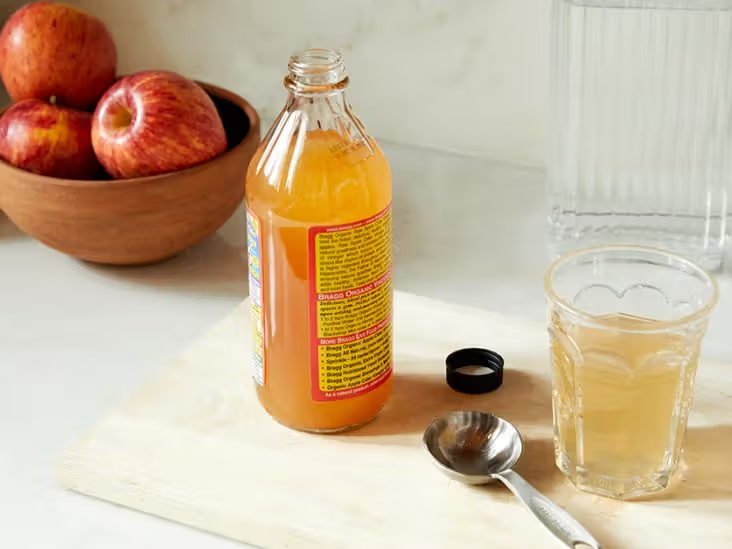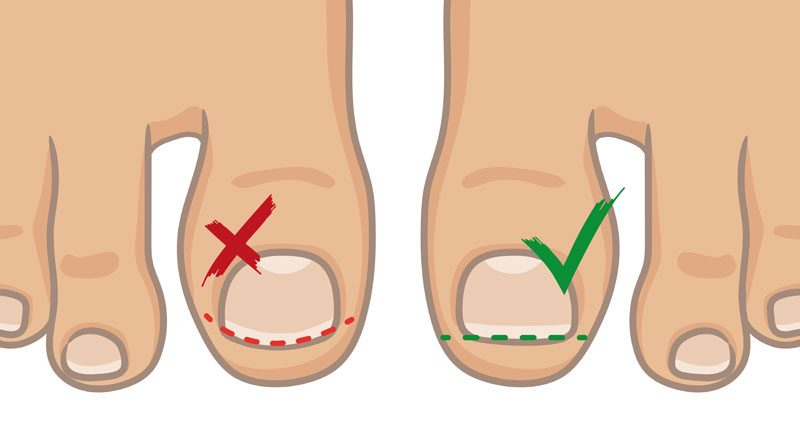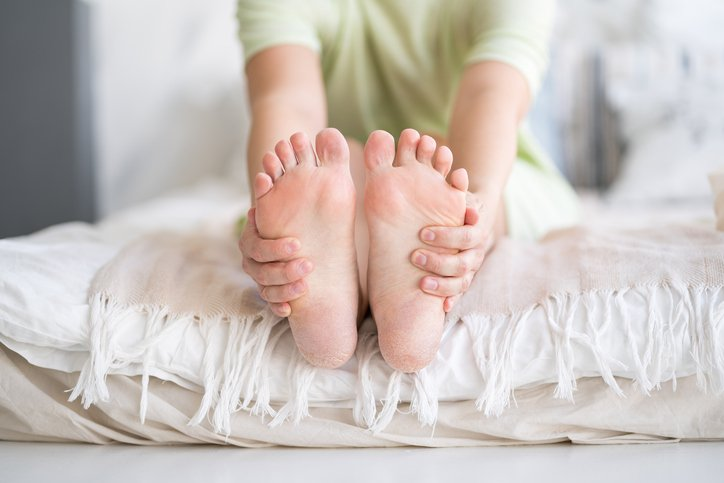Ingrown toenails are not only painful but can quickly become a real nuisance if left untreated. The swelling, redness, and tenderness around the edges of the nail make wearing shoes uncomfortable and walking painful. If ignored, an ingrown toenail can worsen, potentially leading to infection or even an abscess, according to WebMD. When you notice signs of infection such as yellow discharge, fever, or increased redness, it’s crucial to seek medical attention. However, if caught early, there are several natural remedies you can try at home to relieve the discomfort and prevent the issue from escalating.
What Causes Ingrown Toenails?

Ingrown toenails can be caused by several factors, ranging from improper nail trimming to wearing tight shoes. According to Home Remedy Shop, common causes include:
- Sweaty feet: Excess moisture softens the nails, making them more susceptible to becoming ingrown.
- Ill-fitting shoes: Shoes that are too tight or narrow can squeeze the toes, pushing the nails into the skin.
- Injuries: Stubbing your toe or other foot trauma can lead to a nail growing into the surrounding skin.
- Diabetes or circulatory issues: These conditions can make you more prone to foot problems, including ingrown toenails.
- Cutting nails too short: When toenails are trimmed too short, they can grow into the skin instead of over it.
Home Remedies for Treating Ingrown Toenails
The earlier you start treating an ingrown toenail, the easier it is to manage the discomfort and prevent further infection. Here are some natural ways to treat ingrown toenails at home:
1. Soak and Clean Your Foot
One of the simplest and most effective treatments for an ingrown toenail is a warm foot soak. Soaking your foot in warm water three times a day for 15 to 20 minutes can soften the skin around the nail and reduce swelling. According to The Mayo Clinic, this practice not only eases pain but also helps prevent infection.
How to Soak:
- Fill a basin with warm water.
- Soak your foot for 15-20 minutes.
- After the soak, gently dry your foot and use a cotton swab or dental floss to lift the ingrown nail away from the skin. This encourages proper nail growth.
2. Soak in Epsom Salts
Take your foot soak to the next level by adding Epsom salts. Epsom salts are known to soften the skin and nails, making it easier to deal with an ingrown toenail. The salts also help to reduce inflammation and ease the discomfort.
How to Use Epsom Salts:
- Add about 1 to 2 tablespoons of Epsom salts to warm water.
- Soak your foot for 15-20 minutes.
- Repeat the process two to three times a day for best results.
3. Vapor Rub for Relief
Vapor rub isn’t just for clearing your sinuses. It can also help soothe an ingrown toenail. The menthol in vapor rub is known for its anti-inflammatory properties, which can ease the pain and speed up the healing process.
How to Apply:
- Rub a small amount of vapor rub onto the infected toe.
- Cover with a bandage and leave it on overnight.
- Repeat as necessary until the pain subsides.
4. Apple Cider Vinegar for Healing

Apple cider vinegar is a popular home remedy for a variety of ailments, and it can be effective in treating ingrown toenails. Thanks to its antibacterial properties, apple cider vinegar may help fight off infection while soothing the irritated skin.
How to Apply:
- Soak a cotton ball in apple cider vinegar and apply it to the affected area.
- Secure it with a bandage and leave it on for a few hours.
- You can also add apple cider vinegar to your foot soak for added benefits.
5. Keep It Clean and Protected
After trying any of the above remedies, it’s crucial to keep your toe clean to prevent further infection. Applying an antibiotic cream and covering the area with a bandage will help protect the toe from bacteria and other contaminants.
Steps to Protect Your Toe:
- After soaking your foot, pat the area dry.
- Apply a thin layer of antibiotic cream.
- Cover the toe with a sterile bandage to keep it protected throughout the day.
Preventing Ingrown Toenails

The pain of an ingrown toenail can be avoided with some simple preventative measures. Here’s how to keep your toenails healthy and reduce the likelihood of ingrown nails:
1. Trim Your Nails Properly
Trimming your toenails correctly is essential in preventing ingrown nails. Avoid cutting them too short or rounding the corners, as this encourages the nails to grow into the skin.
Nail Trimming Tips:
- Cut your toenails straight across.
- Keep them at a moderate length—just long enough to protect the skin.
- If the edges of your nails are sharp, gently file them down to smooth the corners.
2. Wear Properly Fitting Shoes
Shoes that are too tight can press on your toes, leading to ingrown toenails. Ensure that your shoes provide enough space for your toes to move freely without being cramped.
Shoe Selection Tips:
- Avoid shoes that are too narrow or pointy at the toes.
- Opt for shoes with a wide toe box that allows your feet to breathe.
- If you participate in sports, make sure your athletic shoes offer adequate support and cushioning.
3. Keep Your Feet Dry

Sweaty feet can soften your nails, making them more prone to growing into the skin. Keeping your feet dry, especially in damp environments, will help prevent ingrown toenails.
How to Keep Feet Dry:
- Wear moisture-wicking socks made from breathable materials.
- Change your socks regularly, especially if your feet get sweaty.
- Use foot powder to absorb excess moisture.
Conclusion: Take Action Early to Avoid Pain
Ingrown toenails are not just painful; they can become a bigger problem if left untreated. By following these natural home remedies and prevention strategies, you can effectively treat ingrown toenails and avoid the discomfort they bring. Early intervention is key—treat the issue as soon as you notice it, and take steps to prevent future ingrown nails by caring for your feet properly. Remember, if the pain worsens or signs of infection appear, it’s always best to consult with a healthcare professional for further treatment.


